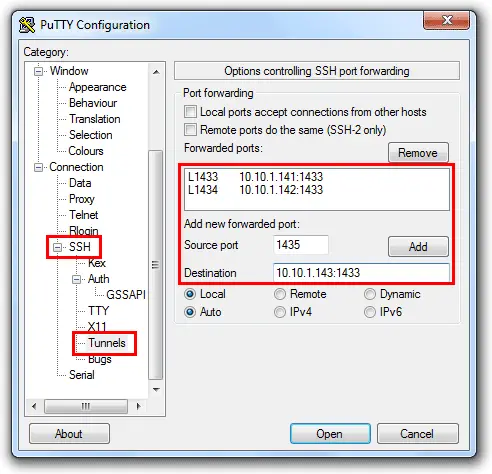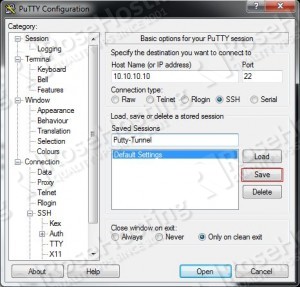

You should get the remote sign on screen of the system you are tunneling to. Configure a new connection and use the parameters below:Ĭlick on Communications, and connect. Click the name of the service instance that contains the node that you want to access. Once the tunnel is established, you now need to set up a SOCKS proxy in your web browser. After you are signed in, you must leave this window open to keep your tunnel active. Create an SSH Tunnel to a Node with PuTTY Access your service console. PUTTY proxy tunnel (poor mans VPN) sshproxykb. Now you can launch your session and sign in to the secure shell. In the left pane, click on Session to bring up the following window. Select both Local ports accept connections from other hosts and Remote ports do the same.Ĭlick the Add button to place your tunnel configuration in the Forwarded ports window. localhost:23 will get you a Telnet connection. The Destination is the connection on your remote SSH machine.
#Ssh tunnel with putty download#
In the Port forwarding section, the Source Port is the source TCP/IP address you want assigned to your local host connection. PuTTY is a nifty ssh client for Windows that you can download here. Do not save this yet we have to configure the ports for tunneling.Ĭlick on the path to reach Tunnels ( Connection > SSH >Tunnels):

By clicking on the add button, it will set the configuration.

Already created tunnels on the right and below that another tunnel that is about to be created. Type the name you wish to use for the saved connection. To create an SSH tunnel, open up the SSH option in the category pane in Putty and then select the Tunnels option. Open PuTTY.EXE, configure your host name, and select SSH for port. To configure a PuTTY session for tunneling Telnet traffic, do the following:


 0 kommentar(er)
0 kommentar(er)
